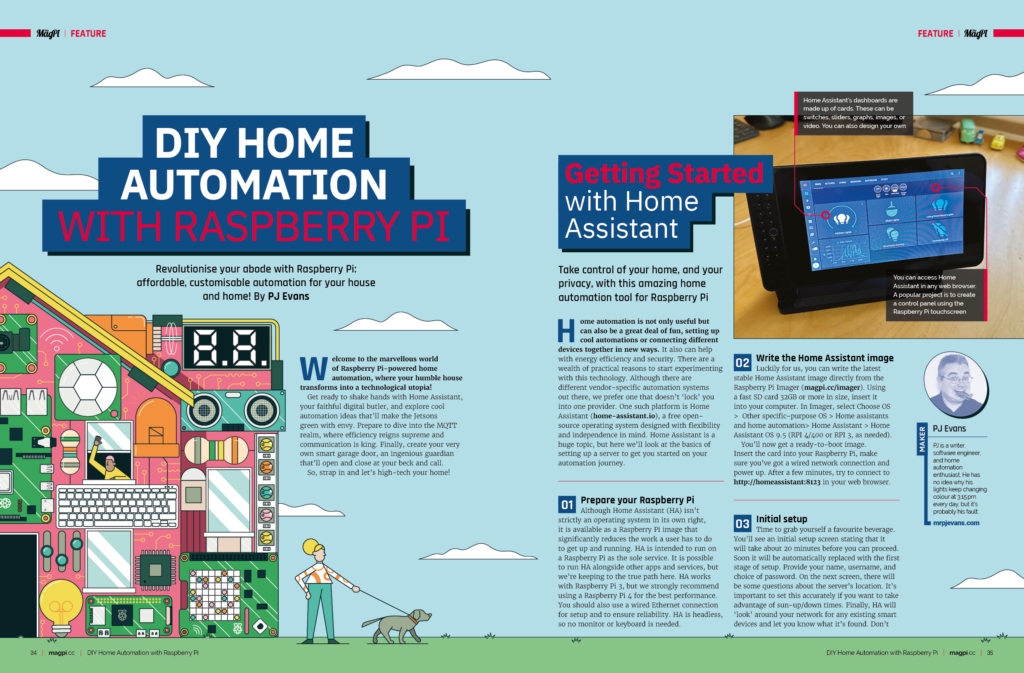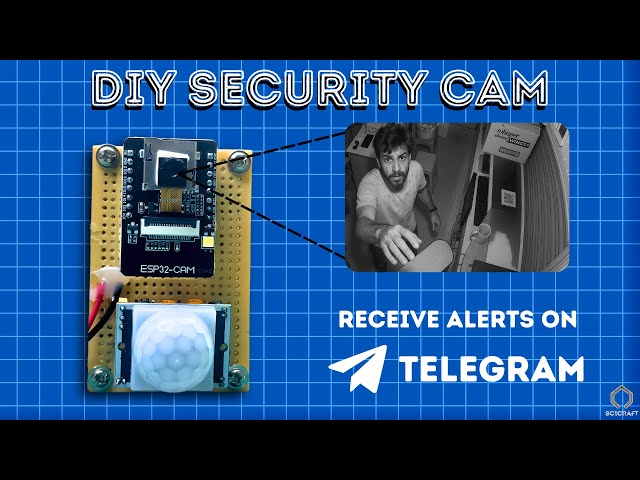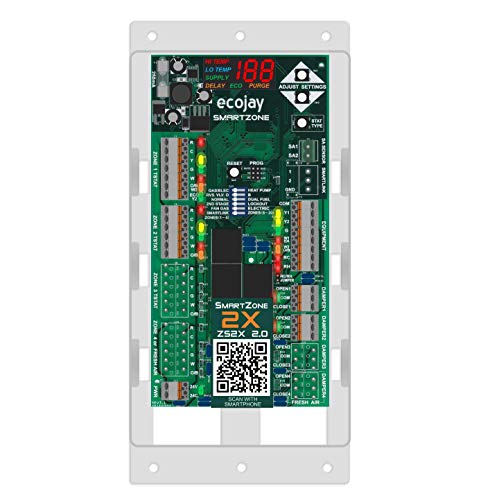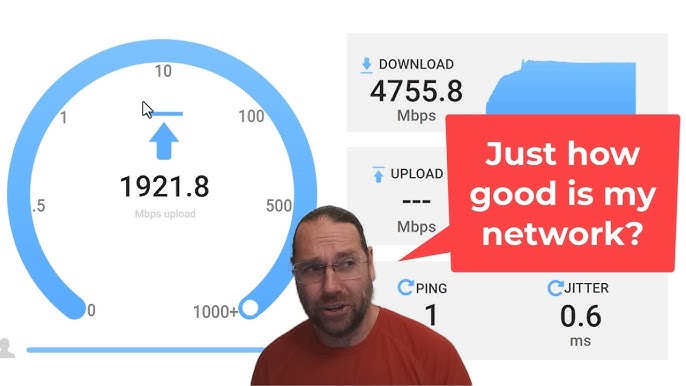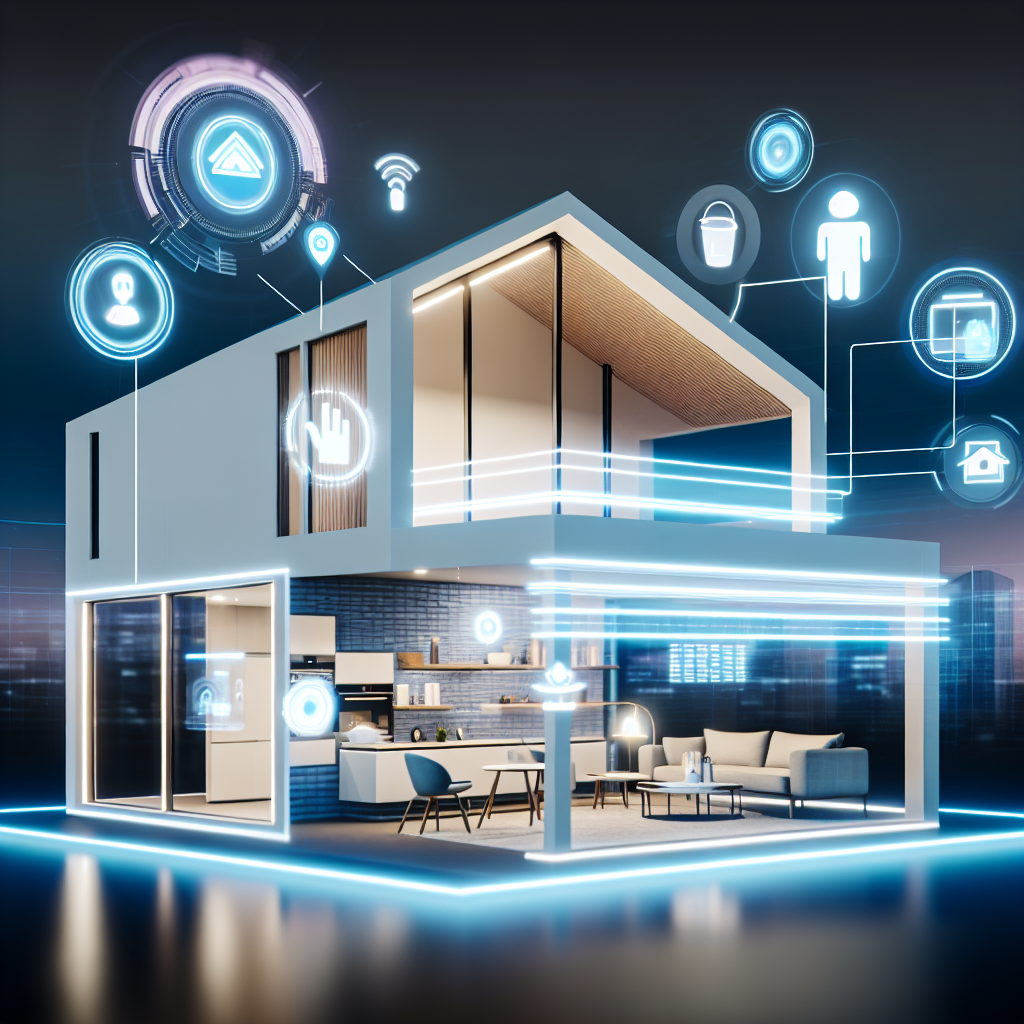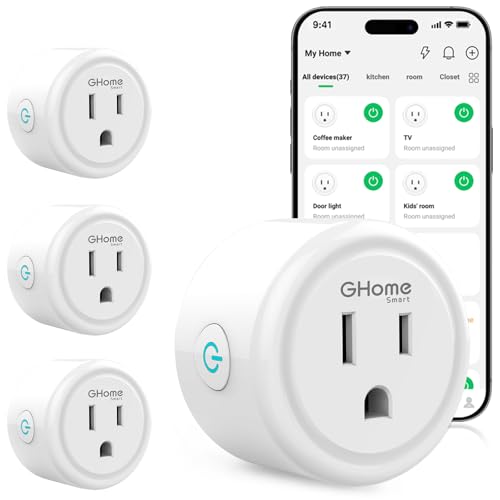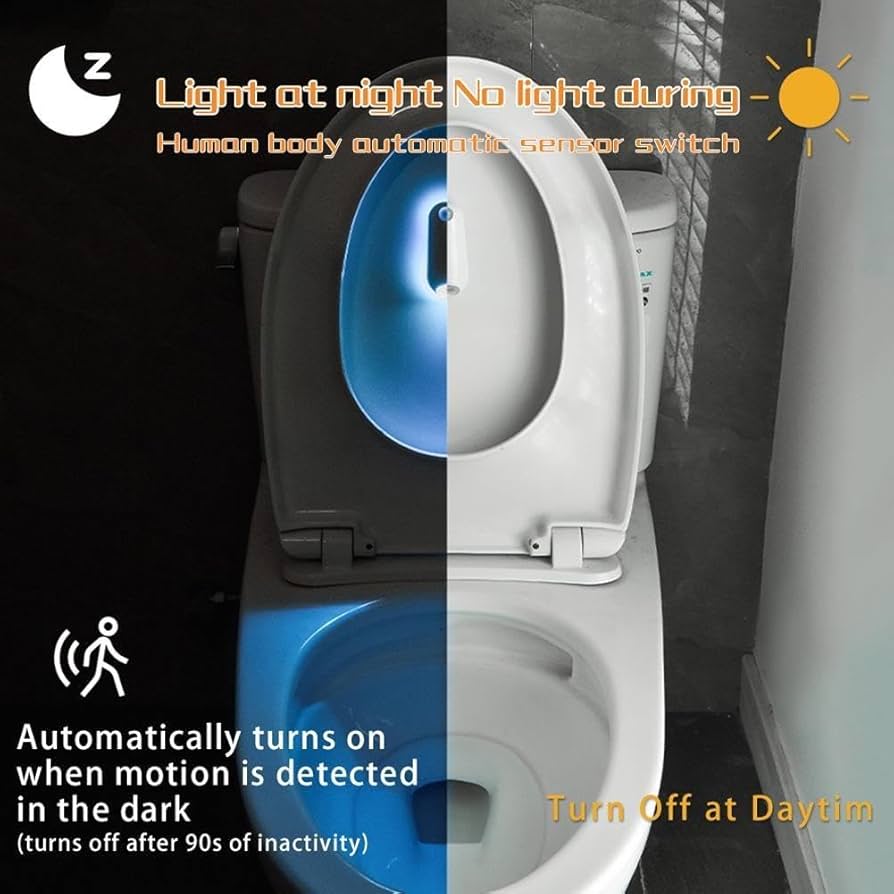Imagine controlling your lights, thermostat, and even your coffee maker with just a tap on your phone. Sounds exciting, right?
You don’t need to be a tech expert to make your home smarter. With DIY home automation, you can start small and build up, saving time, money, and energy along the way. This guide is made just for you—clear, simple steps to transform your living space into a smart home without the hassle.
Ready to unlock the convenience and comfort you deserve? Let’s dive in and make your home work for you.

Credit: thinkrobotics.com
Getting Started With Home Automation
Home automation lets you control devices in your house with ease. It can make daily life simpler and more comfortable.
You do not need to be a tech expert to start. Basic tools and clear steps help beginners set up their first system.
Choosing The Right Devices
Pick devices that fit your needs and home size. Think about what you want to control, like lights or security cameras.
Check if devices work with your home Wi-Fi and smartphone. Look for easy-to-use apps and simple setup guides.
- Smart bulbs for lighting control
- Smart plugs to automate appliances
- Security cameras for home safety
- Smart thermostats for temperature control
Basic Tools And Materials Needed
You need a few simple tools to install most devices. A screwdriver, smartphone, and Wi-Fi are usually enough.
Some devices may require extra items like batteries or mounting hardware. Check the device instructions before starting.
- Screwdriver set
- Smartphone with app installed
- Strong home Wi-Fi connection
- Extra batteries (if needed)
- Mounting tape or screws
Setting A Budget
Decide how much money you want to spend before buying devices. Home automation can be affordable or more costly.
Start small with basic devices. Add more features later as your budget allows and you learn more about automation.
- Set a clear spending limit
- Choose devices with good reviews
- Buy only what you need first
- Plan to expand system over time
Popular Home Automation Platforms
Home automation helps you control devices in your house easily. Many platforms let you connect and manage smart devices.
Choosing the right platform makes your home smarter and simpler to use. Some platforms work better for beginners.
Smart Hubs And Controllers
Smart hubs connect many devices and let them talk to each other. They act as the brain of your smart home.
Popular hubs control lights, locks, cameras, and sensors from one place. They support many brands and devices.
- Samsung SmartThings: Works with many devices and brands
- Amazon Echo Plus: Includes a built-in smart hub
- Google Nest Hub: Controls smart devices with Google Assistant
- Hubitat Elevation: Focuses on local control and speed
Voice Assistants Integration
Voice assistants help you control devices using speech. They make using smart homes easy and hands-free.
You can ask assistants to turn on lights, play music, or check the weather. They work with many smart platforms.
- Amazon Alexa: Controls many smart devices with voice
- Google Assistant: Works with Google Nest and many brands
- Apple Siri: Controls HomeKit-compatible devices
- Microsoft Cortana: Integrates with some smart home systems
Open-source Options
Open-source platforms let you customize your smart home setup. They give more control and flexibility.
These platforms often have active communities that share ideas and help beginners learn.
- Home Assistant: Popular for its wide device support and customization
- OpenHAB: Works well with many smart devices and systems
- Domoticz: Lightweight and easy to use for beginners
- Node-RED: Visual tool for wiring smart devices and services
Simple Automation Projects
Home automation can make life easier and more fun. Beginners can start with small projects that use simple tools.
These projects help you learn how devices work together. You can control your home with apps or voice commands.
Automating Lights And Switches
Automating lights lets you turn them on or off from anywhere. You can set schedules or use motion sensors.
Smart switches replace your regular switches. They connect to your Wi-Fi and work with apps or voice assistants.
- Use smart bulbs or smart plugs for easy setup
- Set timers to save electricity
- Install motion sensors for automatic lighting
- Control lights with your phone or voice
Smart Thermostat Setup
A smart thermostat helps control your home’s temperature. It learns your schedule and saves energy.
You can adjust the thermostat from your phone. Some models work with voice commands and apps.
- Replace your old thermostat with a smart one
- Connect it to Wi-Fi for remote control
- Set temperature schedules for day and night
- Use geofencing to adjust when you leave or arrive
Security Cameras And Sensors
Security cameras help you watch your home from anywhere. Sensors can detect motion or open doors and windows.
These devices send alerts to your phone if they detect something unusual. You can check live video or recorded clips.
- Install cameras at main entrances and common areas
- Use door and window sensors to detect openings
- Set notifications to get alerts on your phone
- Connect devices to a smart home hub for easier control
Connecting Devices And Networks
DIY home automation helps you control devices from one place. Connecting devices and networks is key to making them work well.
You need to understand how different devices talk to each other. This guide explains common connection types and tips for smooth setup.
Wi-fi Vs Zigbee Vs Z-wave
Wi-Fi, Zigbee, and Z-Wave are popular ways devices connect in home automation. Each has pros and cons for your setup.
Wi-Fi uses your home internet and works with many devices. Zigbee and Z-Wave use special signals and need hubs to connect.
- Wi-Fi:Easy to use, no extra hub needed, but can slow your internet.
- Zigbee:Low power use, good for many devices, needs a hub.
- Z-Wave:Works well with many brands, uses less power, needs a hub.
Setting Up A Secure Network
Security is very important for your home automation network. Protect your devices from hackers and unwanted access.
Use strong passwords and update your device software regularly. Keep your network separate from guest or public Wi-Fi.
- Choose strong Wi-Fi passwords with letters and numbers.
- Enable network encryption like WPA3 or WPA2.
- Update device firmware to fix security issues.
- Use a guest network for visitors to protect your devices.
Troubleshooting Connectivity Issues
Devices may lose connection or not respond. Check your network and device settings to fix problems.
Restart your router and devices first. Make sure devices are in range of your network or hub.
- Check if devices have power and are turned on.
- Restart your router and smart devices.
- Move devices closer to the router or hub.
- Check for interference from other electronics.
- Update device software to latest version.
Creating Custom Automations
Custom automations help make your home smarter and easier to manage. You can set actions that happen automatically based on your needs.
Learning how to create these automations is simple and fun for beginners. It lets you control devices without extra effort.
Using Automation Apps
Automation apps let you design rules for your smart devices. These apps are easy to use and guide you step-by-step.
Many apps offer drag-and-drop interfaces. You can pick triggers and actions to create your own automation.
- Choose an app compatible with your devices
- Use presets to quickly build automations
- Test automations before saving them
Scheduling And Triggers
Schedules and triggers start your automations automatically. Triggers can be time, sensor, or device events.
You can set automations to run at a specific time or when you enter a room. This helps save energy and adds convenience.
- Set time-based schedules for lights and appliances
- Use motion sensors to trigger actions
- Trigger automations when devices connect or disconnect
Integrating Multiple Devices
Connecting different devices allows them to work together in automations. This creates a smarter home experience.
You can link lights, thermostats, and security cameras to respond as a group. This saves time and improves control.
- Use a hub or app that supports many devices
- Create automations that combine lights, sensors, and alarms
- Test device responses to ensure smooth operation

Credit: www.reddit.com
Maintaining And Expanding Your System
Building a DIY home automation system is just the start. You need to keep it updated and secure. Also, adding new devices can make your home smarter.
This guide helps beginners maintain and grow their home automation system easily and safely.
Regular Updates And Backups
Always update your system software. Updates fix bugs and add features. They keep your system running well.
Back up your settings often. This saves your setup if something breaks. You can restore your system fast.
- Check for updates every week or month
- Use automatic update tools if available
- Save backups on cloud or external drives
- Test backups to ensure they work
Adding New Devices
Add new devices carefully to avoid problems. Make sure they work with your system. Check compatibility before buying.
Connect devices step-by-step. Test each device after adding it. This helps find issues early.
- Pick devices that support your platform
- Follow setup instructions closely
- Label devices for easy identification
- Keep your system organized
Improving System Security
Security is important for home automation. Use strong passwords to protect your system. Avoid default or weak passwords.
Enable encryption and two-factor authentication if possible. Regularly check your system for unusual activity.
- Change default passwords immediately
- Use strong, unique passwords for devices
- Keep your network secure with a firewall
- Turn off unused devices or services
- Regularly review device access logs

Credit: m.youtube.com
Frequently Asked Questions
What Is Home Automation?
Home automation involves controlling household devices remotely via a smartphone or voice assistant. It enhances convenience and energy efficiency. Beginners can start with simple devices like smart bulbs or thermostats. Many systems are user-friendly, requiring minimal technical skills. As you grow comfortable, you can expand to more complex setups.
How Does Diy Home Automation Work?
DIY home automation allows you to control devices using apps or voice commands. It typically involves smart devices connected through Wi-Fi or Bluetooth. You can automate tasks like lighting, temperature, or security. By setting routines, devices can operate automatically based on your preferences.
What Are The Benefits Of Home Automation?
Home automation offers increased convenience, security, and energy savings. It allows remote control of devices, enhancing comfort and efficiency. Automating routine tasks saves time and reduces energy consumption. Security features, like smart cameras and locks, provide peace of mind. It’s an investment in a smarter, more efficient home.
How To Start With Home Automation?
Start with basic smart devices like bulbs or plugs. Choose a compatible ecosystem, like Google Home or Amazon Alexa. Set up devices using their respective apps. Gradually expand your system by adding more devices. Focus on user-friendly products that fit your needs and budget.
Conclusion
DIY home automation is simple and fun to start. Small steps can make your home smarter. You control your devices and save energy too. Many tools and guides help you learn quickly. No need for expert skills or big budgets.
Just try one project and see the results. Enjoy the comfort and convenience it brings daily. Keep experimenting and improving your system slowly. Home automation can fit any lifestyle or home size. Start today and feel the difference in your life.
18 min read

